Sail boats - introduction
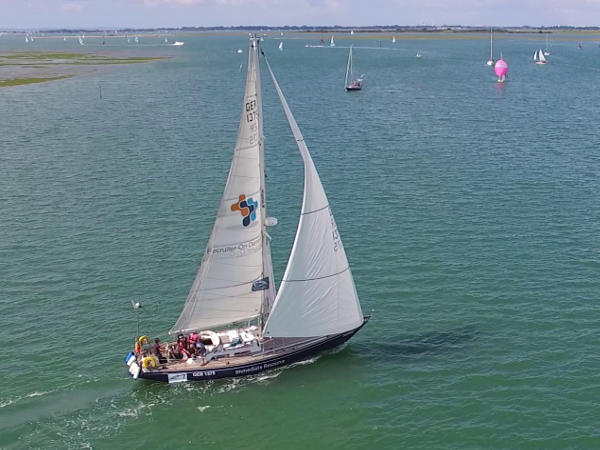
“The pessimist complains about the wind; the optimist expects it to change; the realist adjusts the sails.” – William Arthur Ward
Contents
What are sail boats?
They’re vessels for travelling (and/or living) on water using the wind for propulsion – a sustainable way of transporting people and goods that is undergoing a revival.
There’s no precise distinction between a boat and a ship, apart from the fact that a ship is generally considered to be bigger. There are many different types of sail boats, depending on design, sails and use – examples include schooner, ketch, yacht or sloop. The range of boats, the terminology used, rigs, equipment, legislation etc. are complicated, and can only be touched on briefly in an introduction like this.

Triangular lateen rig on an Arab dhow.
History
The earliest representation that we have of a boat with a sail is from Mesopotamia and is over 7000 years old. One of the most significant developments in sailing was the invention of the lateen rig, probably by the Arabs, around 2000 years ago, which allowed boats to sail against the wind for the first time. From that time, sailing vessels have arguably been the most important means for humans to explore and chart the earth.
Although European vessels tended to be clunky and square-rigged, which required crew to go aloft in all weathers, unlike the Chinese and Arab vessels from which they evolved, it was mainly Europeans who did this exploring and charting. There are several reasons for this, but perhaps the most important was the conquest of Constantinople by the Ottoman Turks in 1453, cutting off Europeans’ land access to the Middle East for Asian trade, and requiring ships to be built and sea routes to be found. Immediately afterwards came the European ‘Age of Discovery’.

Navigation is an extremely important skill on a board a sailing ship.
Sail was virtually the only way to transport bulky items long distances before the Industrial Revolution and the advent of the railways and steam ships in the 19th century. Steam didn’t replace sail entirely though, as there was a rapid acceleration in sail boat technology, culminating in tea clippers like the Cutty Sark – still the fastest commercial sailing vessels ever built (this improvement in a technology due to competition is still called the ‘sailing ship effect’). Sailing cargo ships weren’t supplanted until the twentieth century and the development of the marine diesel engine.
Now, with the greater understanding of what we’re doing to nature, there is much more interest in sustainable alternatives. There are still fleets of independent fishing boats, so why not fleets of independent cargo and passenger sail boats? There are people working on it – see below.

From the top: schooner, ketch, yacht, sloop.
What are the benefits of sail boats?
Environmental
The main environmental benefit is that they don’t require fossil fuels, with their associated emissions of carbon and pollutants when burnt and after spills. Cruise and cargo ships use heavy marine oil that is much more polluting than road fuels. Sailing vessels can also replace diesel lorries, buses and trains for cargo and passenger transport.
There have been improvements in fossil-fuel cargo transport, like kites or slow-steaming, but these gains have been wiped out by increases in the volume of shipping year-on-year. Ultimately, the only way to consume sustainably is to downshift and stop buying unnecessary goods made in sweatshops on the other side of the world.
A taster of what it’s like to be a trainee crew member on Tres Hombres, a sail cargo vessel belonging to Fairtransport.
Personal
You’ll see nature at its best from a boat – from sunsets and unspoilt coastlines to dolphins, whales, flying fish etc. If you get a boat, you can live on it, saving housing costs, but unlike a conventional home, you could use it to make a living by transporting passengers or cargo. Plus holidays are sorted forever.
Social
Sailing can be and has been a life-changing experience for people in difficulty. The Sail Boat Project, for example, is a co-operative that has crewed boats with people who are homeless, unemployed or recovering from addiction. They also help struggling olive farmers in Portugal, by paying them for their olive oil up front. WWOOFers could also be transported to various countries to help olive farmers, and brought them back with the olive oil at the end of the season – and the same applies to other products.

The Cutty Sark, considered the fastest ship in the world at the time, in full sail in the 19th century.
What can I do?
In order of difficulty (and this topic can get pretty difficult):
Buy goods transported by sail boat
What if you went to your local farmers’ market and saw chocolate, coffee, olive oil or other things that couldn’t possibly be produced locally? Would you think that that was against the local / independent ethos of farmers’ markets, and dependent on unsustainable, corporate plantations and ships? But what if it were from independent growers and delivered by independent sail boats?
For shopkeepers and traders, networks are forming to deliver goods by sail that can’t be produced in the UK, like the Sail Cargo Alliance, New Dawn Traders and Sailing Dog. It’s definitely on the increase! Contact them to become a stockist. For consumers, let your local community-supported agriculture scheme or fair trade shop know about them, or buy directly from the companies on the Sail Cargo Alliance website and others – for example rum, chocolate and coffee here, and olive oil here. As reported to us by the Sail Boat Project, the aim is to develop networks with food co-ops, local shops and community-supported agriculture rather than to build empires – which we think is a good approach.

Sail boats are used for living as well as for transport.
Travel by sail boat
You can often find sail boat skippers (via word-of-mouth, an online search or by negotiation with cargo vessels) willing to take you along for a fee. One cargo vessel we talked to takes passengers from Chichester to Cherbourg for £110, for example (and it takes 8-10 hours, depending on the weather). Well worth it for a sustainable adventure rather than a polluting, corporate ferry. FairTransport are looking at setting up routes with large passenger sailing ships. You can reduce the price on cargo boats by negotiation / offering help. It’s a good idea to get some skills first to increase your usefulness, but not essential (you could help load and unload, keep watch, scrub decks, cook or look after children).
You can also volunteer as crew and get yourself a passage. If you get to the Canaries, from there you can hitch across the Atlantic and further afield. If you’re crew, you’re not a passenger, and shouldn’t be charged as such – but a contribution to costs (food, drink, maintenance, mooring etc.) is reasonable, or, if you’re lucky, it could be free. see here for how much you should reasonably contribute. It could work out to be a cheap way to gain valuable sailing skills, and have a great time in the process. There are sites specifically for matching boats with crew members – see here, here and here for more.

Learning to sail with the Sail Boat Project.
Learn to sail
First, get the feel of the wind – get a kite, for example, and maybe graduate to a bit of wind surfing. extrapolate to try to understand the huge pull that an 8m sail can have in a strong wind. There’s a lot to learn – sailing is extremely unpredictable, and you’ll have to deal with wind, weather, currents and tides all at the same time. See here for course providers, or search online.
Get a boat
By the time you’re thinking about getting a boat, you really have to be a proficient sailor, and know everything there is to know about registration, health & safety, insurance, navigation, legislation, mooring, wind speeds, rigging, tides, maintenance etc. There’s a lot of mandatory training, kit and insurance required, such as life jackets, flares, air horn and VHF radio plus training – you’ll learn all about this from your sailing courses.
Resurrecting the Nordlys (1873), now the world’s oldest englneless cargo ship, currently being used to bring olive oil from Portugal to the south of England.
First, decide what you want a boat for. Are you going to be carrying passengers, or cargo, or both? Your vessel needs to be commercially-coded for carrying cargo or passengers for money. And it’s not cheap. As an example, a 70ft steel ketch (2 masts – safer in strong winds), will go for around £100k, plus 15% of this for maintenance every year – so you need a good business plan first. Plus for cargo you’ll need things like a hold that opens, with a derrick / crane to load and unload, and maybe other adaptations depending on what you’re transporting. Then there are mooring costs. When I spoke with Dhara at the Sail Boat Project, he was mooring his 40ft boat in a river for £5k per year, but this can be 2 or 3 times as much in a marina. When loading or unloading, small boat owners get in and out of a port as quickly as possible. They have to minimise costs as they don’t have the economies of scale of the large cargo ships; and you don’t want to go anywhere with an empty boat.

Rum being unloaded from the hold of sail cargo ship operated by Fairtransport.
When looking for a boat and thinking about how you’re going to use it, attend Sail Cargo Alliance meetings as a way in. Visit projects already up and running, and/or volunteer as a crew member. Offer to pay someone who’s done it to point you in the right direction for all the information you’ll need to know. Build yourself a knowledge base. It’s like having a farm – it’s not at all simple, and if you weren’t born into the life, it’s not something you can just do without lots of experience.
It’s a very complicated web of things that you have to keep on top of when you have a boat. It’s all-encompassing, especially if you’re carrying cargo or passengers. We don’t want to encourage supermarket shopping, and so a small cargo boat will need a network of food outlets – local food co-ops, community-supported agriculture etc.

Wooden boat building is a skill that has fallen into decline, but is being resurrected. Here is the Grayhound, a replica of an 18th century cargo vessel, being built from scratch using traditional techniques, in two years, from 2010-12. It’s now used to bring rum, chocolate and coffee across the Atlantic.
Build a boat / become a boat-builder
Building a boat is like building a house – it needs an awful lot of training. You can build from scratch or you can renovate a classic old boat; and you can employ a naval architect, and/or put in a lot of your own labour. There are more boat-building apprenticeships in France than there are in the UK, but there are boat-building schools in Lowestoft, Falmouth, Portsmouth and Lyme Regis.
The sea is very corrosive, so if you don’t want to spend most of your time on maintenance, unfortunately most of the sails, rigging etc. will be synthetic nowadays. Hulls can be glass-reinforced plastic – not great in terms of sustainability – but they can also be of wood, on which you can use natural oils, or of aluminium or ‘self-healing steel’ that stops itself rusting. Wood is a clear winner in terms of strength:weight ratio, and weight is important on a sail boat – the heavier the boat is, the more power it needs to propel it.

Chinese junk rigging.
Finally, this fascinating article discusses the type of sail boats that could still be built after societal collapse, when high-tech, industrial materials would no longer be available (summary: ferrocement hull and Chinese junk rigging).
Specialist(s)
Thanks to Dhara Thompson of the Sail Boat Project for information and pics.

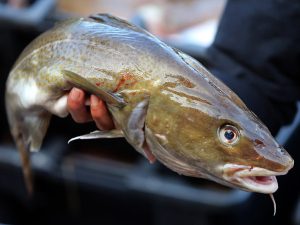



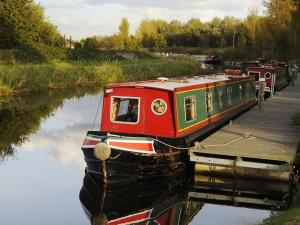

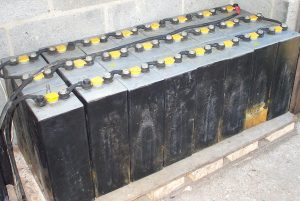

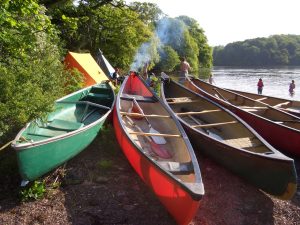

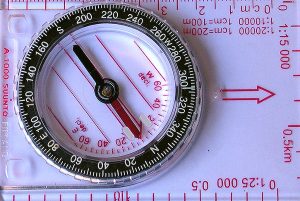
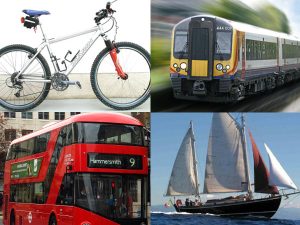
3 Comments
Check out https://www.voyagevert.org/
Fantastic. Sail cargo and now sail ferries. Only scratching the surface, but it’s a start.
Superb article.